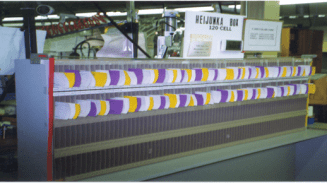A Blog About Understanding The Toyota Production System and Gaining Its Full Benefits, brought to you by "The Toast Guy"


Push The Cart
There’s a certain irony for me in the attention given recently to the application of robots on the shop floor. On a couple occasions in the past year, I’ve heard manufacturing colleagues talk about the benefits of deploying robots to handle material conveyance. “Better,” they say, “to redeploy humans to value-adding jobs where human capability and creativity can benefit the customer.” Given the persistent labor shortage, I get the benefit of filling open job slots. What’s confounding to me is the tendency to ascribe terms like value-adding and non-value-adding (NVA) to specific jobs rather than to wasteful activities within the jobs.

Many years ago, when robots were still science fiction, my factory converted from push to pull production. For this to be possible, just-in-time delivery from the stockroom to the production floor was paramount. Building products one-by-one required a frequent, uninterrupted conveyance function, carefully choreographed to pick up finished goods and drop off kits to build. It quickly became apparent that for this new system to work, we’d have to make significant improvements to material handling as well as to the production process. For a stockroom that had traditionally delivered a heaping pile of parts once a day, this was transformational. To provide just-in-time parts supply to production, stockroom employees created a U-Shaped kitting area where parts were grouped according to model to minimize walking, and created ‘cafeteria-style’ kitting to reduce hand and eye motion. To make delivery to production easier, they designed special cart, stocked once per day with parts that were common to all models, leaving only a few parts to be pulled from the ‘cafeteria.’
It was exciting to watch the creativity in action. “What’s next?” I asked our material handler, Bob, one morning by way of encouraging improvement.
“How about you push the cart today?” he responded. “
Taken off guard, I replied, “Sure,” I’ll give a try.”
Bob smiled and said, “Not just for a couple minutes. For the entire day.”
I made a couple of excuses about meetings I’d miss and expressed concern that I might hold up production. “It’s okay,” Bob assured me. “I’ll tag along and help out. I’d like you to get the full experience.” Moment of truth. I agreed – and learned a few things.
- The aisleways were tight, making steering difficult.
- Turning corners was especially hard on back and shoulders due to clearance.
- Some material drop off points were beyond reach, requiring me to leave the cart.
- There were a couple very narrow spots where I had to steer around poles.
- My conveyance route was blocked in a couple of places by empty boxes.
All of these things slowed me down. As I mentioned them to Bob, who was following me, he just replied, “Uh huh.”
At the end of the day, I thanked Bob for the rare learning experience. He chuckled. The following day we widened and cleared the aisles, and moved all drop offs within reach. (And, by the way, my shoulders and back were pretty sore.)
So how does this story relate to the irony I feel regarding the application of robots on the shop floor?
The irony. A colleague of mine recently related to me that his factory had purchased and deployed a robot to enable humans to fill empty job slots in production. After extolling the benefits of this move – fast ROI, improved resource availability, fewer indirect (say NVA) employees – he commented offhandedly: “The implementation was surprisingly easy. All we had to do was widen the aisles a little and keep them clear.” The irony is I knew exactly what he was talking about because I had pushed the cart. Funny how we expect people to accommodate problems that we fix for robots.
O.L.D.
PS By the way. our 3rd Annual Virtual Lean Spring Showcase is just about one month away. We’ll be visiting employee teams from 8 great organizations from all over to observe their best practices and ask questions. All in one day. Save the date: April 4. For more information or to register, follow this link: Spring Lean Showcase
